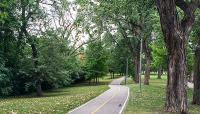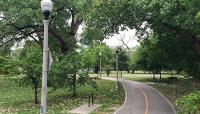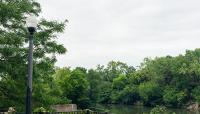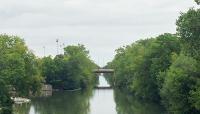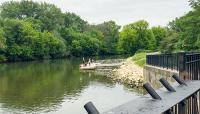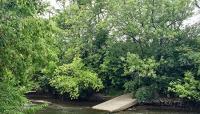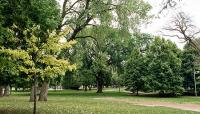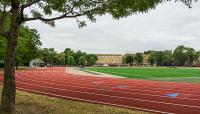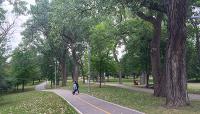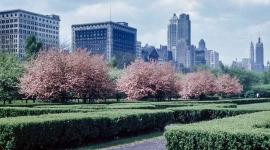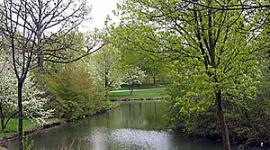Seeking to increase property values and create recreational spaces, residents on the northwest side of Chicago established the River Park District in 1917. The largest of the six parks established by the District, the 30-acre River Park is located just north of West Argyle Street, encompassing the convergence of the North Branch and the North Shore Channel of the Chicago River. The park opened on July 4, 1920, with the formal dedication of a flagpole, although land acquisition continued until 1922. With an existing building retrofitted and already in use as a fieldhouse, in 1926, landscape architect (and River Park District board member) Jacob L. Crane, Jr., created a plan for the park’s original 40 acres. One year later, the Chicago Landscape Company realized a somewhat modified version of Crane’s plan, establishing meandering pathways throughout expansive green spaces dotted with trees, and installing playgrounds, sports fields, and bicycling paths east of the river, as well as a pedestrian bridge over the North Branch dam and waterfall.
The original fieldhouse was replaced with a new brick structure in 1929, a swimming pool was installed by the Chicago Park District (which had absorbed the River Park District in 1934) in 1948, and tennis courts and baseball diamonds were subsequently added. Ten acres comprising the northwestern corner of the park (above the convergence of the river and channel) were ceded to North Park College (now North Park University) in the late 1950s. In 1999, the City of Chicago built a boat launch along the North Branch, and, in 2000, a soccer field and track were installed in the southwestern sector of the park, jointly financed by North Park University and the City. Running along the east side of the channel, the North Shore Channel Trail continues beyond the park’s northern and southern boundaries.
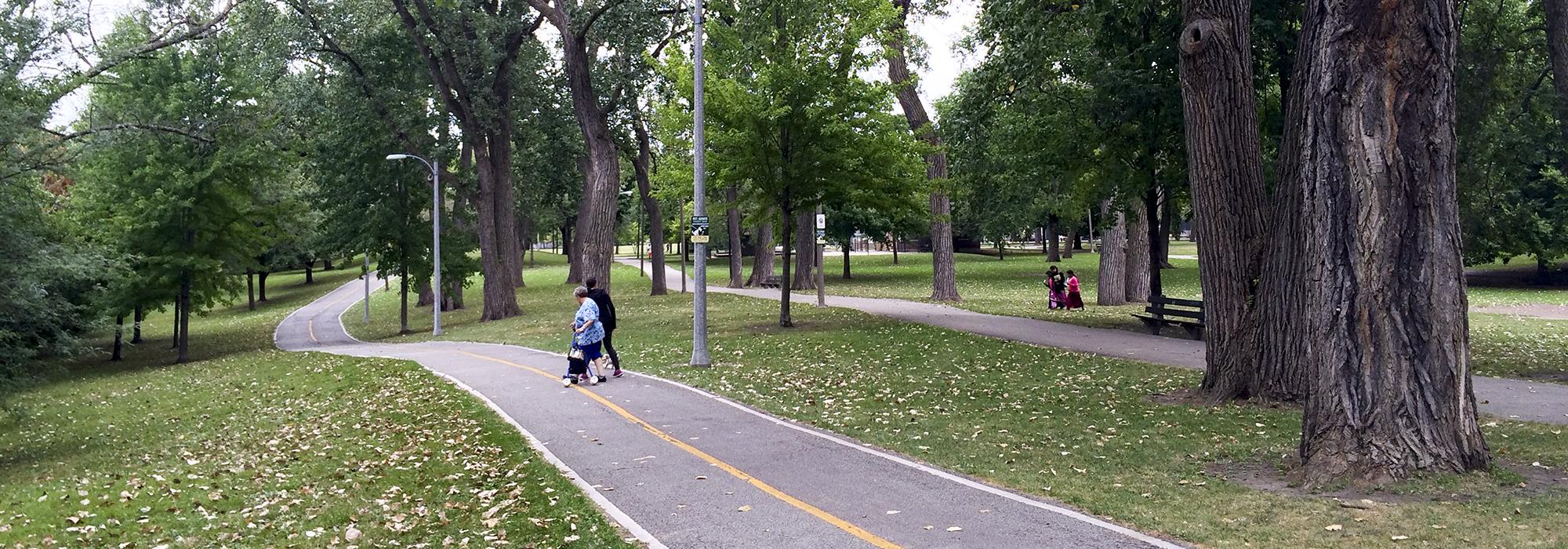
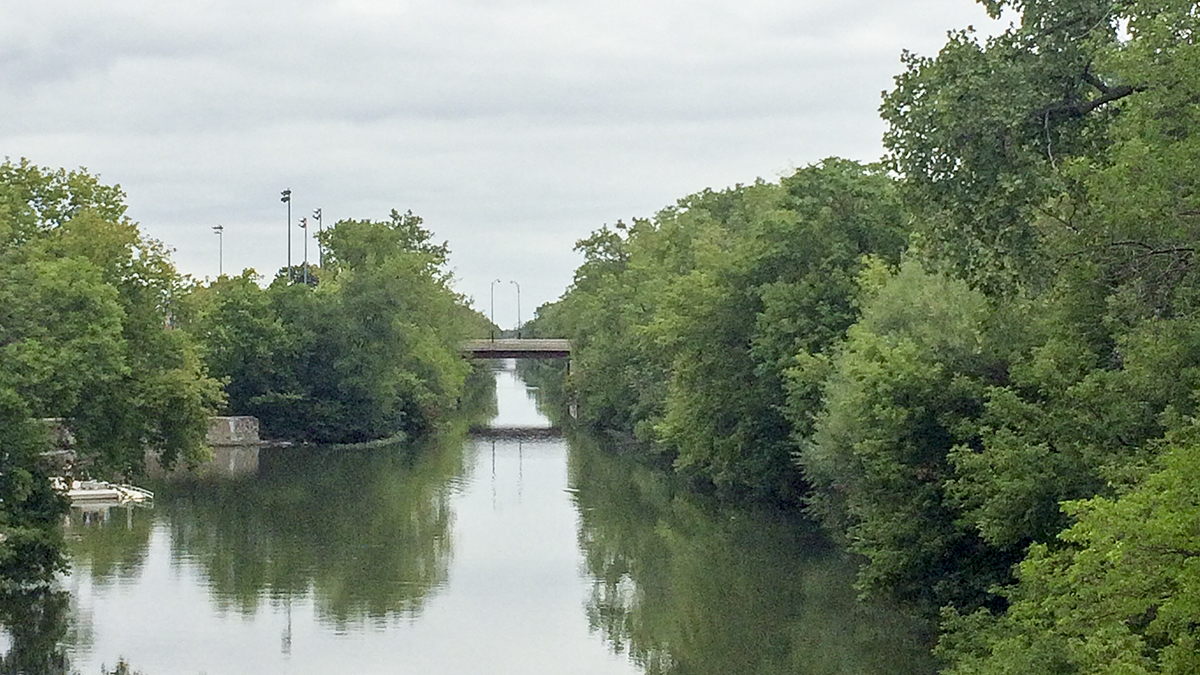
Chicago,
IL
United States



